Mums in labour, meds washed away—these Drs tirelessly aided Taman Sri Muda’s flood victims
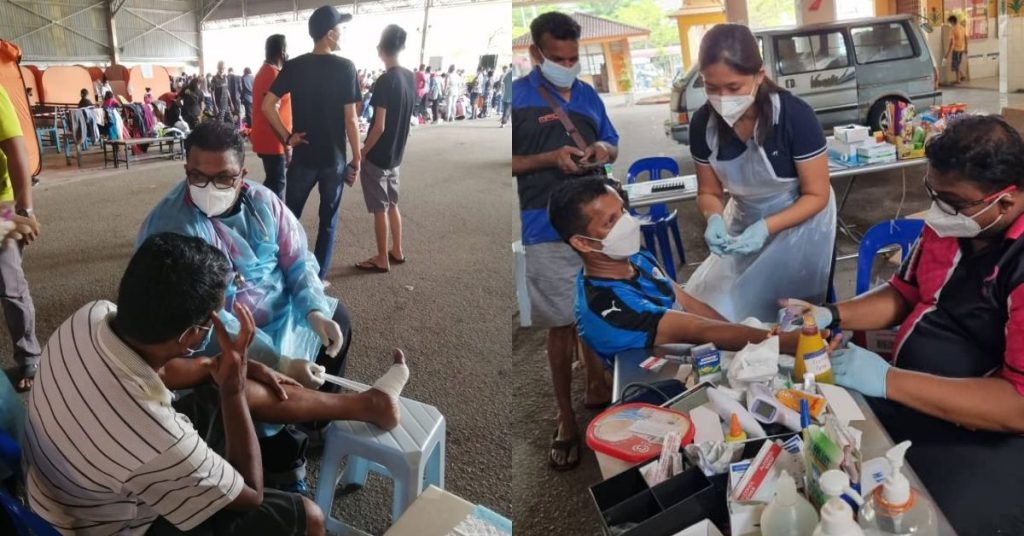
Dr Suthan Kaveri could recall clearly the first few days of the floods, when on the afternoon of December 19, 2021, he visited a flood relief centre set up in Sekolah Jenis Kebangsaan (Tamil) Ladang Emerald, Taman Sri Muda.
He was there to distribute extra stocks of face masks that his company, ePink Health, had when he came to the realisation that the centre lacked medical standby.
Being from a telemedicine platform, Dr Suthan knew he could leverage their network of doctors and other medical professionals to the benefit of the flood victims.
So, he set to work bringing in his internal teams and blasting messages to medical professionals he knew to come and help out.
By the evening of December 19 itself, he’d assembled a team and set up an emergency field clinic, segregating people into green, yellow, and red zones based on the emergency of their medical needs.

Making sense of the chaos
The green zones were where flood victims with common colds, the flu, coughing, fever, headaches, and more, would get treated. Over in the yellow zone, Dr Suthan and his team were tending to those with low blood pressure, uncontrolled diabetes, hypertension, etc.

“The flood victims were stuck [in their locations] for 48 hours before being rescued, and their medications had already been washed away by the flood,” Dr Suthan revealed in an interview with Vulcan Post.
“For 48 hours, they didn’t take any medication. So definitely, their blood pressure, diabetes, weren’t under control.”
In the 7 days that Dr Suthan and his team were present at the centre, he estimated that they gave out about RM50K worth of medication.
These funds came from donors all around Malaysia who paid directly to pharmacies, who then delivered the medication to the team.
For patients who were in more severe states than the medication could control, the team had to stabilise them first before transferring them to the nearest hospitals.

Meanwhile, in the red zone, they had to resuscitate patients who had collapsed. As we cycled through Dr Suthan’s memories of events, he recalled a particularly impactful one they saw in the red zone—having to support a mother who was going through preterm labour.
While he retold the story, I couldn’t help but feel sorry for the mother, imagining the anxiety she might’ve felt from first being shocked over the flash floods, getting displaced, then going into labour in a relief centre full of hundreds to thousands of other victims.
On the doctors’ end, Dr Suthan relayed the adrenaline rush his team felt as they worked to stabilise her, all the way up until she was transported to a safer location to give birth.
From mass treatment to house calls
From his recollection, there was never a slow day at the centre, especially when they had to be wary of COVID-19 infection risks too.

With so many people to care for and a team of about 30 to tend to all, the medical team found themselves spending most of their time at the centre.
Dr Suthan himself stated that he spent more time there than at home for the week, even showering and having his meals there.
By December 25, the centre was closed, but wanting to continue volunteering, the ePink Health team opened a small medical booth deeper into Taman Sri Muda on December 27. They carried out similar services up until New Year’s Eve.
“Currently, we still have a balance of medication though. So, what we’re doing are a house-to-house screening and free medication delivery,” Dr Suthan shared.
The initiative began on January 7, and would be repeated every weekend for an indefinite duration, at least until the other clinics in Taman Sri Muda are able to reopen.
Altogether, he has a team of about 40 volunteers spread out across the neighbourhood to execute the plan.
On a regular day if the floods hadn’t happened, ePink Health would be offering telehealth consultations from doctors, nutritionists, psychologists, and more, along with e-pharmacy services, and house calls upon request.

During the past month of floods, however, volunteering became the top priority especially in the first devastating week.
Thus, its usual operations were put on hold momentarily. With the house-to-house screening and medication deliveries though, Dr Suthan arranged them for weekends specifically so that ePink Health could continue as usual from Mondays to Fridays.
Moving forward smarter and better prepared
Based on his experience at Taman Sri Muda, he had some parting advice to share in order for us to be better prepared should similar natural disasters (crossing my fingers) happen again.
“What we can do is digitalise simple medical records, like what are the basic medications people are taking,” he noted.
“We can also spread awareness that if you are in a flood-prone area and want to save your IC, passport, please package your chronic medication together too.” This way, the issue of medication getting washed away can be prevented.
If resources permit, medical teams could set up relief centres in advance too once the nation has been warned about impending flash floods or similar by MetMalaysia.
As for how ePink Health and similar digital healthcare companies can further contribute in this space, Dr Suthan said that they had been collecting data of the flood victims they treated.
“We have dissected them according to the severity, type of diseases, and any acute conditions that arose due to the floods.”

“Based on these, we can share the data with KKM to come up with a proper plan to prepare and cater better to those specific conditions should serious floods happen again,” he said.
For example, if the data shows that there were lots of chronically diabetic patients who lost their medications in the recent floods, for any future disasters, such medication could be prepared in advance for deployment to relief centres.
In all, what I garnered from speaking to Dr Suthan was that the technology, data, and manpower from the private healthcare sector are all readily available. We just need to harness them better.
- Read more flood-related content here.
Also Read: We reflect on how the pandemic has changed our payment habits, to plan wisely for 2022
Featured Image Credit: Dr Suthan Kaveri, ePink Health
US’ DoorDash requires all employees to deliver food monthly – should S’pore firms do the same?
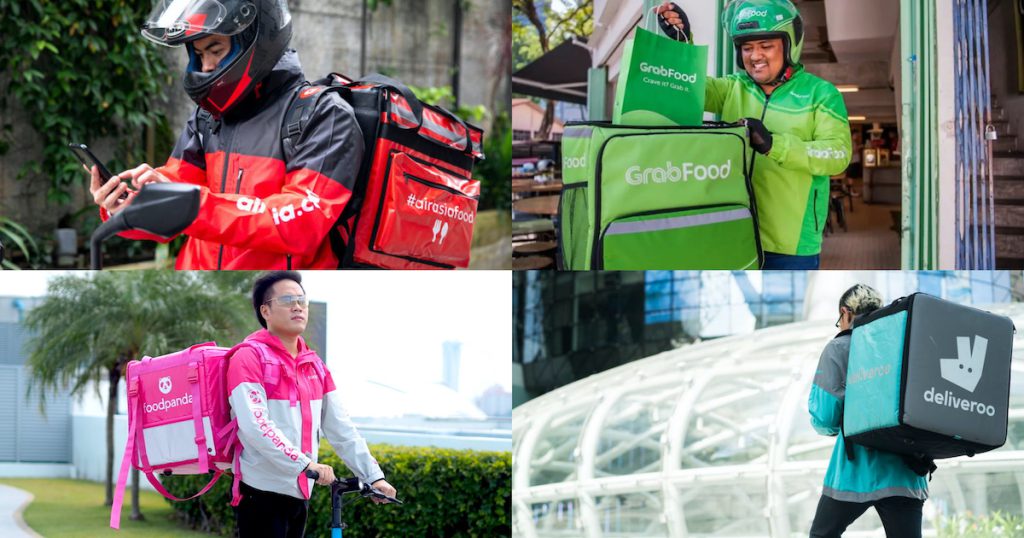
An employee at American food delivery company DoorDash made headlines and sparked debate last December after they uploaded an anonymous post raging over the company reinstating its WeDash programme.
The company policy — implemented in 2013 but paused since 2020 due to the pandemic — requires DoorDash’s executives and C-suite to do at least one food delivery run, help out in the kitchen or customer service department once a month.

This would allow everyone in the company — from its software engineers to its chief executive officer — to experience the impact of its services first-hand. Ultimately, this helps their team better design products and services for customers.
Should food delivery companies in Singapore emulate this model too?
There were mixed opinions on WeDash
One reason DoorDash reinstated its WeDash policy is because of its dominance in the US food delivery space. According to Bloomberg Second Measure, it accounted for 57 per cent of food deliveries in the US in November 2021.
While some employees were unhappy with the WeDash model and threatened to leave, others saw value in it.
Among the 2,000 comments under the anonymous post on Blind, some felt it would provide them more understanding in performing their role.
Interestingly, DoorDash users also took to social media to voice their support of the initiative. Most felt the move would help improve user experiences for riders, restaurants and users.
One common word that kept popping up in this debate? Empathy.

Currently, efforts to better protect the rights of gig economy workers are largely centred around governmental action.
Last July, China mandated for food delivery drivers to be paid above minimum wage, be allowed to unionise, as well as have access to social security. It also disallowed platforms from placing “unreasonable demands” based on algorithms on its drivers.
Separately, the European Union also proposed requirements for gig economy platforms to provide its gig workers employment rights such as minimum wage and sick pay in December 2021.
In Singapore, food delivery drivers are not protected enough
Singapore is no stranger to the debate about improving protection for gig economy workers.

During the National Day Rally last year, Prime Minister Lee Hsien Loong singled out food delivery drivers, describing them as “for all intents and purposes just like employees”, yet they are lacking in employee benefits.
Despite the growing number of Singaporeans joining the gig economy — self-employed persons made up 14.7 per cent of Singapore’s workforce in 2020, up from 13.5 per cent in 2019 — they are not eligible for Central Provident Fund (CPF) contributions.
Being classified as self-employed persons, they do not have employment contracts with food delivery providers and are hence excluded from protections under the Employment Act. They also do not have union protections, PM Lee highlighted.
While not being formal employees gives them additional liberties to choose when they want to work, delivery drivers are often penalised if they do not meet certain quotas.
They are also not required to be granted health benefits. However, a quick search on the websites of Grab, foodpanda and Deliveroo revealed that they do offer insurance coverage for drivers when they are actively delivering.
Execs should walk on the ground to better empathise

Grab’s chief executive officer, Anthony Tan, has openly shared his experiences walking the ground — from working in a kitchen to shadowing a veteran delivery driver from the company.
During the Wall Street Journal’s CEO Council Summit last September, Grab CEO Anthony Tan shared that his experience as a kitchen runner made him realise that some kitchen staff had trouble handling order slips with English instructions.
Hence, he came up with the idea to auto-translate order slips when it is printed out.
With first-hand experience on the ground, employees can get a better understanding of the impact their work has on others. By helping out, be it from the merchant’s or delivery driver’s point of view, nuances that may have otherwise been missed can be quickly identified and solved.
While asking for feedback may help, empathy from having first-hand experience can drive employees to be more passionate in their work and come up with improved products.
From a consumer standpoint, a company with empathy for its frontline workers is also a plus point. In 2020, intelligence company Morning Consult found that 90 per cent of consumers said it is important for companies to treat their employees well.
For now, change might be on the way for delivery driver benefits as the Singapore government announced the formation of an advisory committee for platform workers in September 2021.
But beyond governmental policy, perhaps food delivery companies in Singapore ought to take a page from DoorDash to better protect its gig workers who are arguably the backbone of their company.
While it may be difficult to implement right from the get-go, company policies requiring its executives and C-suites to walk the talk would serve to better improve their company’s services for its customers, delivery drivers and merchants.
Shop and support the best homegrown brands on VP Label now:
[iframe_vp_product src="https://vulcanpost.com/label/embed-all/" id="iframe1"]
Featured Image Credit: AirAsia food / GrabFood / foodpanda / Retail News Asia
Also Read: How S’pore Is Benefitting From The Hidden Food Delivery Rider Micro-Economy
SGX-listed Hatten Land opening crypto mining farm in M’sia end-Jan, to build 2,500 mining rigs
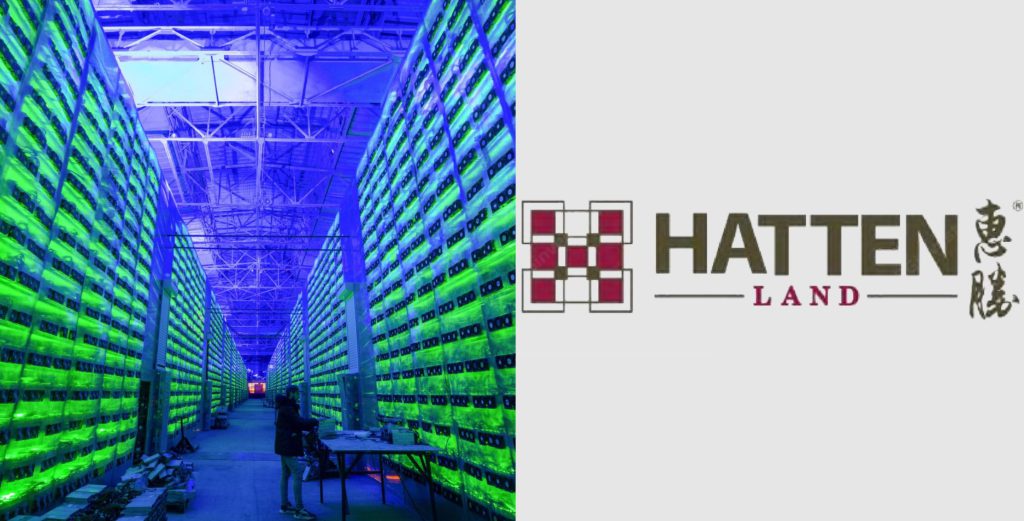
Singapore Exchange catalist-listed firm Hatten Land is setting up a crypto mining farm in Malaysia and operations will start by the end of this month.
This is an agreement signed between its subsidiary Hatten Edge and SMI Vantage’s subsidiary SMI CS, which will allow the pilot phase of the first 50 sets of crypto mining rigs to start operations.
Over 2,500 crypto mining rigs planned
The pilot is in line with plans to install and operate over 2,500 sets of crypto mining rigs within its properties in 2022.
On Tuesday (Jan 11), the group confirmed its first shipment of 80 crypto mining rigs with partner Frontier Digital Management.

The next batch of about 1,500 crypto mining rigs will be installed from Feb to Mar 2022. SMI CS has the option to provide another 1,000 sets of crypto mining equipment for the year.
The agreement states that SMI CS will be responsible for safeguarding the confidentiality and integrity of the crypto wallet that will contain the mined cryptocurrencies. Hatten Edge will take on the task of installing the mining rigs at the facilities upon delivery.
The net proceeds from the mining are tabulated after deducting related operational and management expenses.
According to Hatten Land, it expects the deal to contribute “positively to its net assets and financial performance” for the financial year ending Jun 30, 2022.
Crypto mining impact on global warming
Cryptocurrency has been viewed as a heavy greenhouse gas emitter, as it contributes to air and water pollution. According to Digiconomist, Bitcoin mining generates about 96 million tonnes of carbon dioxide emissions each year, equivalent to the amount of emissions generated by some smaller countries.
The second largest crypto by valuation Ethereum, produces more than 47 million tonnes of carbon dioxide emissions annually.

While observers may argue that many other industries contribute negatively to the environment as well, like aviation, the concerns from environmentalists are that cryptocurrency, with its increased popularity, is growing in demand and there has been little efforts to improve its negative impact on the climate.
According to a study, Bitcoin could push global warming to beyond two degrees celcius by 2033. The article noted that Bitcoin mining in China alone (before the nationwide crypto mining ban) could generate 130 million metric tons of carbon dioxide emissions by 2024.
With miners forced out of China, they are migrating to the United States and other countries which now includes Malaysia. The energy consumption could grow even larger unless more renewable energy is used.
China’s mining ban due to high energy consumption
Up till July last year, China was controlling as much as two-thirds of all Bitcoin mining in the world. It then swiftly banned crypto mining in the country because of the high energy consumption caused by crypto mining.
In September, China also banned cryptocurrency transactions and prohibited the opening of new mining projects in the country. One major reason was because the majority of China’s energy production comes from coal, which is highly pollutive.

Small investors have been buying up crypto mining rigs outside of China after the crackdown and companies moved out to seek new bases with “friendly regulations” and cheap electricity. The biggest pack are said to have shifted operations to the US, Malaysia, Russia, and Kazakhstan.
Shop and support the best homegrown brands on VP Label now:
[iframe_vp_product src="https://vulcanpost.com/label/embed-all/" id="iframe1"]
Featured Image Credit: Getty Images, Hatten Land
Also Read: Crypto exchange Binance.sg withdraws MAS licence application, to close in S’pore by Feb 13
Why thousands of S’poreans subscribed to used kids clothes biz Retykle in just 2 mths of launch
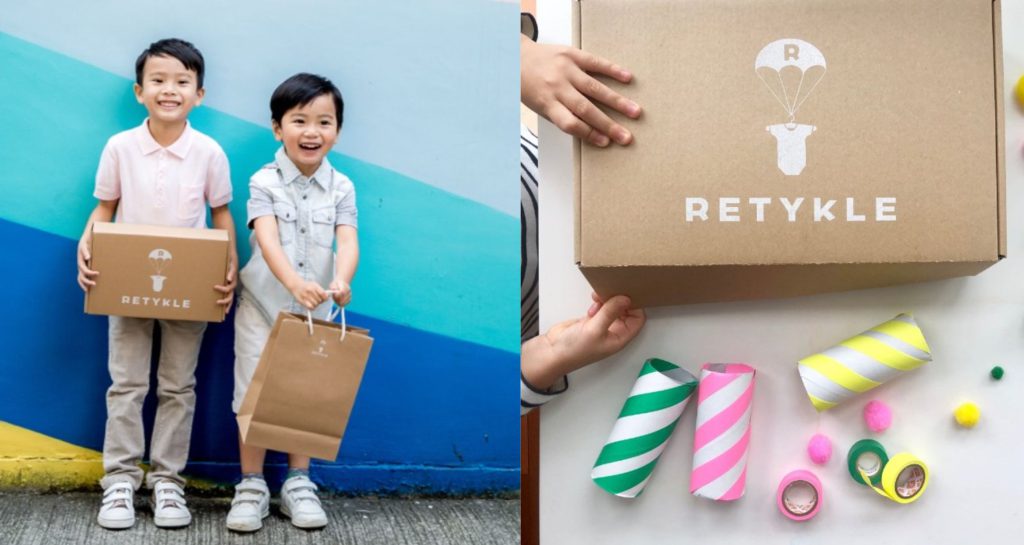
She spent almost half of her life living in Asia. This fashionable mommy of two was once on the front row seat of fashion developments for major brands like LVMH, Richemont, Lane Crawford, and the Selfridges Group for more than a decade.
Sarah Garner worked in the luxury fashion industry under a range of management roles and was living a glamorous life. But while she strutted through work meetings in her statement stilettos owning the scene with her career, a nagging thought always popped up in her mind – on how unsustainable the fashion industry is due to the constant need for fresh looks and materials.
“Whilst my career in fashion was often glamorous on the frontlines, I grew increasingly concerned with the unsustainable pace of the industry coupled with an insatiable appetite for newness from consumers,” Sarah told Vulcan Post in a one-on-one interview.

Those thoughts grew stronger by the day and by the time she became a mother and had her first child, the maternal instincts to protect the environment just like Mother Earth became her new calling.
“When I had my first child, it allowed me to put into focus my desire for serving him and his future. This pushed me to reorient my career, tapping into my past experiences to further my passion for a more sustainable fashion industry.”
“Moreover, seeing firsthand the experience of my son speeding through his baby wardrobe largely untouched, I knew this was something that needed fixing. In my desire to build a platform that facilitated efficient sharing and circularity, Retykle was born in 2016.”
Retykle was set up to eliminate all the hassle buyers and sellers face with resale, said the founder. The goal then was to make it an easy and rewarding experience to shop and sell preloved baby clothes – making life better for both parents and the environment.

The birth of Retykle
It seems Sarah knew what the market needed, as in just five years since its inception the business has grown to sell thousands of products each month, with over 150,000 items listed on its Hong Kong website. Following its success in Hong Kong, Retykle launched in Singapore last November, its first overseas branch.
“We have a few thousand Singapore subscribers thanks to our visibility and brand building since launching the retykle.com site…We also welcomed hundreds of new sellers in Singapore upon opening our doors and are building our brand locally, as we did in Hong Kong, one “Retykler” at a time.”
According to Sarah, prior to Retykle there were no formal channels whereby parents could go to buy or sell preloved children’s clothing. Parents back then had to turn to social media channels and classified groups to source for the secondhand items. It was a time-consuming process and some may even end up buying fake goods.

In addition, parents who wanted to resell their children’s clothes often found it a hassle to list and sell each item individually, on top of their busy schedules. Oftentimes than not, the channels or platforms they sold their items on had low reach and the efforts go to waste.
Tapping on technology
Retykle cuts the time required to source for these clothes and makes it easy for sellers to list their items, said Sarah. The business works as an online consignment platform, which means that the Retykle team collects items from customers’ homes for free. It also takes on the sellers’ responsibilities, from collection to pricing and delivery to customers.
The team at Retykle conducts quality control, photographing, pricing, and the listing of the items. Sellers just need to supply the clothes and earn cash whenever an item sells. Popular brands on the site include Ralph Lauren, Adidas, and Stella McCartney.

All of these are built through the platform’s custom technology which provides a seamless experience for sellers and buyers alike, Sarah said.
“For our sellers, we offer free home pick ups and then they receive automated messages throughout the journey as well as a personal dashboard to keep track of their items without having to do anything. Sellers just need to sit back and wait to collect their earnings of 50 per cent of selling price for cash or 55 per cent for store credit.”
“For shoppers, we offer quality assurance services to mitigate the risks of damage, fault or counterfeits that are latent in the peer-to-peer secondhand market,” Sarah said.
Retykle assures that all items listed on its site have been freshly laundered and checked thoroughly by its quality control team. It stands behind the products with 100 per cent guarantees, the founder said.

“We have a strict multi-point check to ensure that everything listed on our site meets our quality, brand, category, and authenticity criteria. For items that are not accepted for listing, we give sellers the option to collect their items (for free), pay to have them posted back to them (for S$5.00), or we will donate their items to a local registered charity on their behalf (for free),” said Sarah.
“We will accept free returns within seven days of purchase if anything doesn’t meet a customer’s liking,” she added.
Preloved children’s clothes potential
There’s a massive potential in the circular economy for a preloved children’s clothes marketplace like Retykle, said Sarah.
“Everything we buy for our kids is of temporary use and so I believe there’s no better category suited for circularity as the need for a rotating wardrobe is inherent with their never-ending growth spurts.”
According to her, the kids’ fashion space alone is worth almost US$250 billion globally and only one to three per cent of the stock reaches the secondhand market when it’s outgrown. This makes it an enormous and largely untapped opportunity.
The recent sustainability push spurred by the pandemic is supporting the resale industry to “grow exponentially” too.

“The global fashion resale market is forecast to more than double to US$64 billion of sales by 2025. Increased reliance on digital platforms due to the pandemic, coupled with a growing concern for the environment, as well as an enthusiasm to earn extra cash from our closets during these uncertain economic times are some of the reasons contributing to this accelerated shift towards circular fashion.”
Singapore is seen to be a participant in this sustainable living push, hence the company made the decision to set up operations here.
“What sets Singapore apart from other countries is that there is a high growth mindset for shifting to sustainable lifestyle choices. This openness to making everyday changes to tread more lightly on the environment are the seeds of openness to the secondhand market. There’s already quite an active and thriving community investing in swapping and secondhand for adult fashion but the kids’ segment had been overlooked, until now,” said Sarah.
Business growth amid Covid-19
The pandemic may have devastated and negatively impacted some businesses, but for Retykle, it was able to capture opportunities in this period.
“There have been multiple unforeseen benefits of Covid-19 on our business. With parents spending more time in their homes, they are more focused on keeping their closets tidy and organised and have leaped into the habit of clearing out their closets and “Retykling” habitually,” said Sarah.
“We also saw a pronounced increase in environmental concern throughout the pandemic, which prompted meaningful shifts in consumer behaviour. Secondhand is the most sustainable way to dress and parents are particularly compelled to do what is best for their kids’ future,” she added.

In addition to the surge in online shopping as more stayed home, some families who had tighter purse strings looked for alternatives like Retykle too. “The financial and job uncertainty led more people to unlock value in their idle assets in their closets and to seek discounts via shopping for their favourite brands with Retykle, as items are sold at an average 80 per cent discount.”
One setback that the business faced due to Covid-19 is that team members are unable to meet physically between Singapore and Hong Kong. So far, the team has been relying on remote interactions to stay connected, but they hope to conduct in-person meetings once the pandemic eases.
Hiring and funding plans
Moving forward, 2022 looks to be an exciting year for Retykle, as it ramps up efforts to expand its Retykle community here.
The business has accumulated almost 5,000 items on its retykle.sg website to sell and is adding more inventory daily. To support this growth, it’s planning to more than double the local team from its current team of three people. Globally, the company has 15 staff.

Retykle is also planning to raise its Series A funding round this year to scale new markets and strengthen its tech capabilities to offer opportunities for brands to plug into its platform and develop the circular economy through them.
There are plans to host pop-up events soon but Sarah adds that the business will still very much keep its eye firmly on e-commerce.
“We will still remain largely an e-commerce platform, as we believe in the value of convenience of online shopping, especially during these pandemic times. However, we do believe that it is important for customers to have a physical touchpoint with us to learn more about our brand, mission, and platform,” she said.
Shop and support the best homegrown brands on VP Label now:
[iframe_vp_product src="https://vulcanpost.com/label/embed-all/" id="iframe1"]
Featured Image Credit: Retykle
Also Read: This 32-year-old S’porean sells balloons for a living – biz turns profitable in under 2 years
Sea Ltd. lost half of its value in 3 months – what happened to S’pore’s largest company?
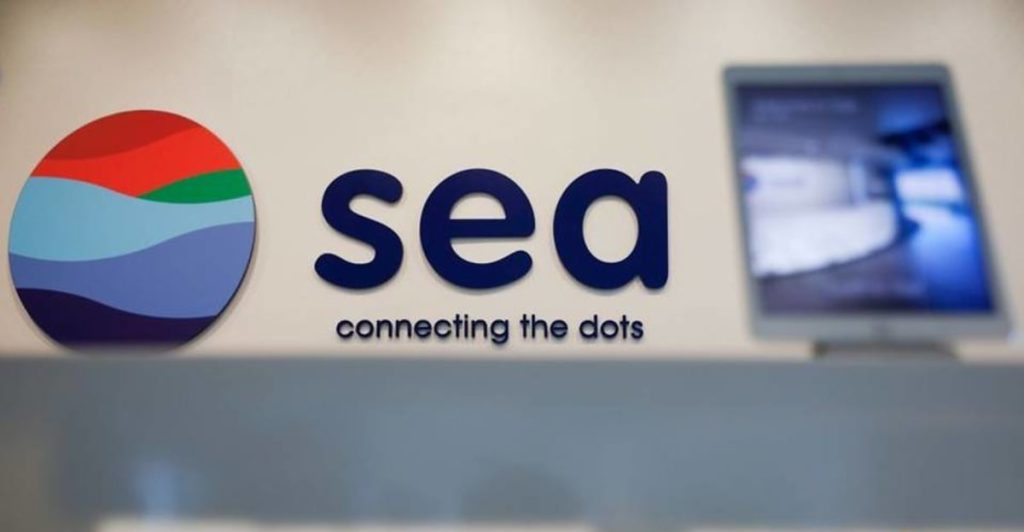
Valued at over US$100 billion, Sea Ltd — the parent company of Shopee and Garena — is Singapore’s largest company by market capitalisation.
However, just three months ago in mid-October, it was valued at around US$200 billion — more than all Singaporean banks (DBS, OCBC and UOB) combined.
As I reported earlier, Sea’s leading growth driver, Shopee, has been doing exceedingly well in 2021, beating expectations and even eclipsing Alibaba’s entire international (ex-China) ecommerce business, consisting of brands like AliExpress, Lazada and Trendyol (combined).
So, what’s going on with Sea? Is the company losing steam as the world is trying to live with Covid-19? Has it lost confidence of investors, taking their money to greener pastures? Does that spell trouble for Shoppe?
Not at all.
Its situation, however, provides an excellent lesson on why companies should not be judged by their stock market capitalisation.

It’s a far cry from what bank analysts predicted just two months ago, with expected prices ranging between US$380 and US$416 per share as recently as mid-November.
In fact, the slump is so bad that it has completely erased the gains recorded over the entire 2021, putting the company 20 per cent below the level it started the year at in mid-January of 2021.
As of 2022, then, Sea got back to roughly where it closed 2020.
This is despite the company’s good performance throughout the year, and no new information has been released which would significantly change that. At least no new information about Sea itself…
A rising tide lifts all boats…
…but the opposite is true as well. When the tide recedes, all boats go down with it.
Stock price is only partly dependent on the company’s performance. The other huge factor is general market environment — and for the greater part of the past two years it has been, paradoxically, very favourable.
Since the slump in early 2020, governments around the world unleashed fiscal and monetary stimuli, desperately trying to prop up the economy.
Much of this freshly minted cash, particularly in America, found its way into the stock market and cryptocurrencies (in the absence of other good investments).

Between the bottom of the pandemic-induced trough in March of 2020 and the current peaks, the index tracking America’s largest 500 companies jumped by over 100 per cent. That’s less than two years.
To find how long it had previously took it to record a similar gain, peaking in February of 2020, we would have to go back to autumn of 2013.
In other words, American stock market has ballooned between 2020 and 2022, as much as it had previously gained between 2013 and 2020 — and it has done it in the middle of a global pandemic and the worst disruption to human activity in a century.
Some of the companies have clearly been excellent performers, benefitting from provision of digital services, while millions of people stayed locked at home or had a greatly reduced outdoor activity. But in general, stocks have largely been disconnected from the underlying economic trouble.
Not anymore.
Where does that put Sea, exactly?
Sea Ltd. is one of the biggest winners of the pandemic, as both its digital entertainment and e-commerce arms benefited from the pandemic, since the internet was the only window to the world open to people.
Its performance confirmed that with sales figures growing rapidly, even if the company is still losing money in pursuit of market share.

Quarterly sales of Shopee more than tripled in a year and a half / Data Source: Annual Reports
However, just as its growing sales and Shopee’s debuts in new markets in Europe and India have fueled interest in the company, it has unquestionably benefited from the excess money sloshing around the marketplace, which has elevated its stock to close to US$400 per share.
Today, as inflation bites many developed markets — including the US, where it reached seven per cent in 2021, the highest since 1982 — money seems to be receding from the stock marketplace, particularly as American Fed is raising interest rates and will likely start rolling back its quantitative easing program, instituted after the crisis in 2008/09 (which was largely an unorthodox money printing operation).
As a result, headlines like the one below from Bloomberg started appearing this January:

As you can see, then, Sea is not alone. In fact, very nearly half of the Nasdaq index listed companies (40 per cent of them so far) have lost 50 per cent or more off their highs recorded in 2021 – i.e. just a few months ago.
In other words, it’s not Sea that has a problem, but the entire stock market.
How does that affect Sea’s future?
If the company is fine, relatively speaking, what does it mean for the coming years? Well, it has successfully raised approximately US$9 billion since late 2020, which is enough to keep it going for the next few years.
It has used its high valuation to the full, by raising capital around its peak share prices, preventing unnecessary dilution of ownership, just before the market took a nose dive.
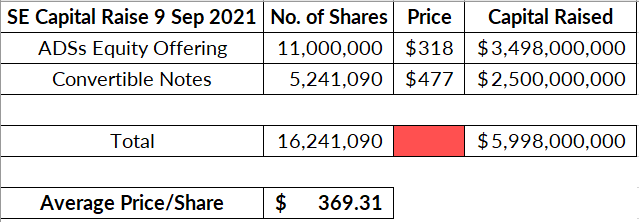
At this point, the current stock prices won’t be their primary concern, particularly as everybody else is affected too.
A greater challenge — though still one that would end up hurting everyone — is a possibility of an economic downturn, as governments around the world feel the brunt of high inflation and are bound to fight it.
A stock market crash — which isn’t outside the realm of possibility in the next year or two — would certainly bring about a greater economic crisis, affecting millions of people, leading to reduced spending, still long before Shopee is able to break even (or turn a profit).
Thus far, the platform is doing well in terms of getting a foothold in its new markets, as indicated by the traffic figures to its respective websites:



Timing is everything
Success in business isn’t about being the first or the greatest, but about timing your moves right.
Some of the world’s biggest brands have ultimately collapsed. Some of those who are first to the market failed before successors took over (Facebook wasn’t the first social media site, Google wasn’t the first search engine, Apple was neither the first or the biggest personal computing company).
In case of Sea, it certainly isn’t the first e-commerce platform, but it seems to be one that is timing its activity perfectly well, even when its huge competitors are struggling (like Alibaba-owned Lazada and Alibaba itself).
The Singapore startup has made the most of the pandemic, using it to catapult itself among the world’s largest companies and raising significant amounts of money just before the opportunity to do so cheaply closed.
As a result, no matter what the immediate future has in store for all of us, it is one of the (young) businesses best prepared to tackle it.
Shop and support the best homegrown brands on VP Label now:
[iframe_vp_product src="https://vulcanpost.com/label/embed-all/" id="iframe1"]
Featured Image Credit: Reuters
Also Read: Shopee is now equal to Alibaba’s entire international e-commerce, and about to outgrow it

